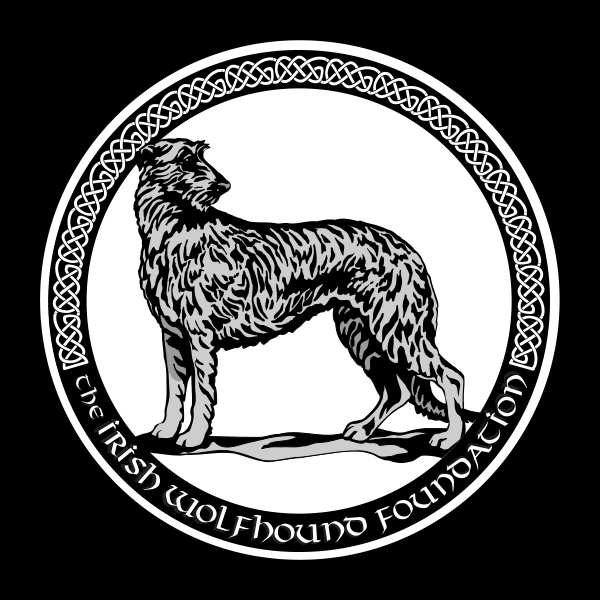IW Reference Ranges for Blood Parameters
Establishing Breed-Specific Reference Intervals for Hematologic, Serum Biochemical and Thyroid Function Parameters in Irish Wolfhounds
Specific Aim:
This research project is aimed at developing breed-specific reference ranges for blood parameters, including complete blood count (CBC), blood chemistry and thyroid hormone concentrations in Irish Wolfhounds.
Introduction:
It has long been known that there are substantial breed variations in hematologic, metabolic and endocrine parameters in dogs, which have the potential to lead to issues with diagnosing and treating important diseases. 1–4 In addition, previous studies have shown substantial breed variation in thyroid function tests between dog breeds. 5 Important variations in reference intervals have been noted in multiple studies of Greyhounds. 6–8 Interestingly, a recent study of Scottish Deerhounds showed variations in reference intervals that were similar to Greyhounds for some paramaters, but also included some differences from Greyhounds, suggesting that variability likely exists between sighthound breeds. 9
Breed-specific reference intervals for hematology, serum biochemistry and thyroid function tests have not been evaluated in Irish Wolfhounds. The one-size-fits-all approach to reference intervals could lead to misdiagnoses, delayed treatment, and suboptimal care for Irish Wolfhounds, as their physiological and hematological profiles may significantly differ from those of other breeds. The need for breed-specific reference ranges in Irish Wolfhounds arises from several compelling factors:
- Unique Physiological Characteristics: Irish Wolfhounds exhibit distinct physiological characteristics due to their size and breed-specific genetics. These differences can impact the interpretation of blood parameters, leading to misunderstandings of their health status.
- Health Challenges: Irish Wolfhounds are prone to specific health issues, such as cardiac conditions, bloat, and musculoskeletal problems. Accurate reference ranges tailored to their breed might aid in the early detection and management of these conditions.
- Precision Medicine: As personalized and breed-specific healthcare becomes increasingly important in veterinary medicine, establishing reference ranges tailored to Irish Wolfhounds may enhance the precision of diagnostics and treatments.
- Improving Healthcare Outcomes: By ensuring accurate reference intervals, we can facilitate timely and appropriate interventions, ultimately improving the overall health and longevity of Irish Wolfhounds.
- Research and Education: This initiative will not only benefit Irish Wolfhounds but also contribute to the broader veterinary community by advancing our understanding of breed-specific variations in blood parameters.
Materials and Methods:
Irish Wolfhound Recruitment:
In keeping with Clinical and Laboratory Standards Institute (CLSI) guidelines, 120 healthy Irish Wolfhounds without any history of chronic disease will be recruited from the Irish Wolfhound Association of the Delaware Valley specialty and the Irish Wolfhound Club of America national specialty, as well as other regional groups. A pre-collection screening survey will be used to identify any diseases or conditions that could affect the tests, including a history of polyuria/polydipsia, kidney disease, heart disease, endocrine disease, or neoplasia. Dogs with any of these conditions or signs will be excluded.
Sample Collection:
After obtaining informed consent, all subjects will have a full physical exam, and the following blood samples will be collected from 120 Irish Wolfhounds via a single venipuncture of a lateral saphenous or cephalic vein.
- 7 ml in a red top tube for serum biochemistry and T4, free T4 and TSH
- 3 ml in an EDTA tube for complete blood count (blood films will be created and stored for each in case of the need for clinical pathologist review) .Two aliquots of serum will be decanted from the red top tube after centrifugation at 2500xg for 20 minutes. The aliquots will be frozen immediately on dry ice and then transferred to a -80C freezer for batch serum biochemistry and thyroid function testing.
All samples will be sent to IDEXX for analysis.
Statistical Analysis:
Data will be evaluated using descriptive statistics. All parameters will be evaluated using normality testing (D’Agostino and Pearson). Reference Intervals will be established by using the 5th and 95th percentiles using the methodology recommended in current CSLI
guidelines. 10
References:
1. Lavoué R, Geffré A, Braun JP, Peeters D, Trumel C. Breed-specific biochemical reference intervals for the adult Dogue de Bordeaux. Vet Clin Pathol. 2013;42(3):346-359.
2. Miglio A, Gavazza A, Siepi D, et al. Hematological and Biochemical Reference Intervals for 5 Adult Hunting Dog Breeds Using a Blood Donor Database. Animals. 2020;10(7):1212.
3. Nielsen L, Kjelgaard-Hansen M, Jensen AL, Kristensen AT. Breed-specific variation of hematologic and biochemical analytes in healthy adult Bernese Mountain dogs. Vet Clin Pathol. 2010;39(1):20-28.
4. Sharkey L, Gjevre K, Hegstad-Davies R, Torres S, Muñoz-Zanzi C. Breed-associated variability in serum biochemical analytes in four large-breed dogs. Vet Clin Pathol. 2009;38(3):375-380.
5. Hegstad-Davies RL, Torres SMF, Sharkey LC, et al. Breed-specific reference intervals for assessing thyroid function in seven dog breeds. J Vet Diagn Invest. 2015;27(6):716-727.
6. Liffman R, Johnstone T, Tennent-Brown B, Hepworth G, Courtman N. Establishment of reference intervals for serum symmetric dimethylarginine in adult nonracing Greyhounds. Vet Clin Pathol. 2018;47(3):458-463.
7. Zaldívar-López S, Marín LM, Iazbik MC, et al. Clinical pathology of Greyhounds and other sighthounds. Vet Clin Pathol. 2011;40(4):414-425.
8. Campora C, Freeman KP, Serra M, Sacchini F. Reference intervals for Greyhounds and Lurchers using the Sysmex XT-2000iV hematology analyzer. Vet Clin Pathol. 2011;40(4):467-474.
9. Sheerer KN, Couto CG, Marin LM, et al. Haematological and biochemical values in North American Scottish deerhounds. J Small Anim Pract. 2013;54(7):354-360.
10. Horowitz GL. Defining, Establishing, and Verifying Reference Intervals in the Clinical Laboratory: Approved Guideline. 3rd ed. Clinical and Laboratory Standards Institute; 2008.
Additional Study Details
| Study Date(s): | 9-22-2023 |
|---|---|
| Study Status: | Ongoing |
| Enrollment Status: | OPEN to new enrollment |
| Lead Researcher(s): | Guillermo Couto, DVM DACVIM |


